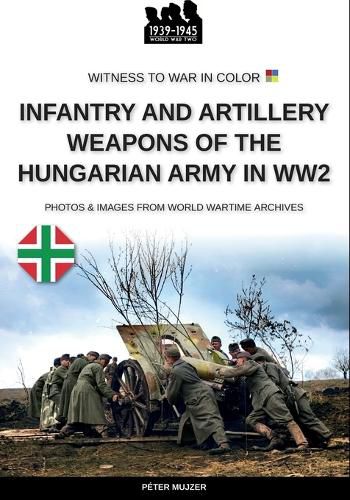Readings Newsletter
Become a Readings Member to make your shopping experience even easier.
Sign in or sign up for free!
You’re not far away from qualifying for FREE standard shipping within Australia
You’ve qualified for FREE standard shipping within Australia
The cart is loading…






This title is printed to order. This book may have been self-published. If so, we cannot guarantee the quality of the content. In the main most books will have gone through the editing process however some may not. We therefore suggest that you be aware of this before ordering this book. If in doubt check either the author or publisher’s details as we are unable to accept any returns unless they are faulty. Please contact us if you have any questions.
Hungary finished the WW1 on the losing side, lost significant territory, manpower and resources. Due to the implementation of the Peace Treaty the existing arms industry and the Armed Forces were seriously limited. From the beginning the arms industry and the Armed Forces secretly retained capacities which were over the limitations. From the beginning of the 30s the enlargement and modernisation of the Armed Forces started. Hungary was an agricultural county with limited heavy industrial assets, but it was a solid foundation to modernise and produce infantry weapons and artillery. First, it based on the modernisation of the WW1 weaponry inherited from the Austro-Hungarian Army. Later, licences were purchased and put into production. During WW2, the Hungarian industry was able to supply the Army with all kinds of small arms and artillery weapons, however, not all were modern designs. A significant number of German and captured weaponry also purchased by the Hungarians.
$9.00 standard shipping within Australia
FREE standard shipping within Australia for orders over $100.00
Express & International shipping calculated at checkout
This title is printed to order. This book may have been self-published. If so, we cannot guarantee the quality of the content. In the main most books will have gone through the editing process however some may not. We therefore suggest that you be aware of this before ordering this book. If in doubt check either the author or publisher’s details as we are unable to accept any returns unless they are faulty. Please contact us if you have any questions.
Hungary finished the WW1 on the losing side, lost significant territory, manpower and resources. Due to the implementation of the Peace Treaty the existing arms industry and the Armed Forces were seriously limited. From the beginning the arms industry and the Armed Forces secretly retained capacities which were over the limitations. From the beginning of the 30s the enlargement and modernisation of the Armed Forces started. Hungary was an agricultural county with limited heavy industrial assets, but it was a solid foundation to modernise and produce infantry weapons and artillery. First, it based on the modernisation of the WW1 weaponry inherited from the Austro-Hungarian Army. Later, licences were purchased and put into production. During WW2, the Hungarian industry was able to supply the Army with all kinds of small arms and artillery weapons, however, not all were modern designs. A significant number of German and captured weaponry also purchased by the Hungarians.